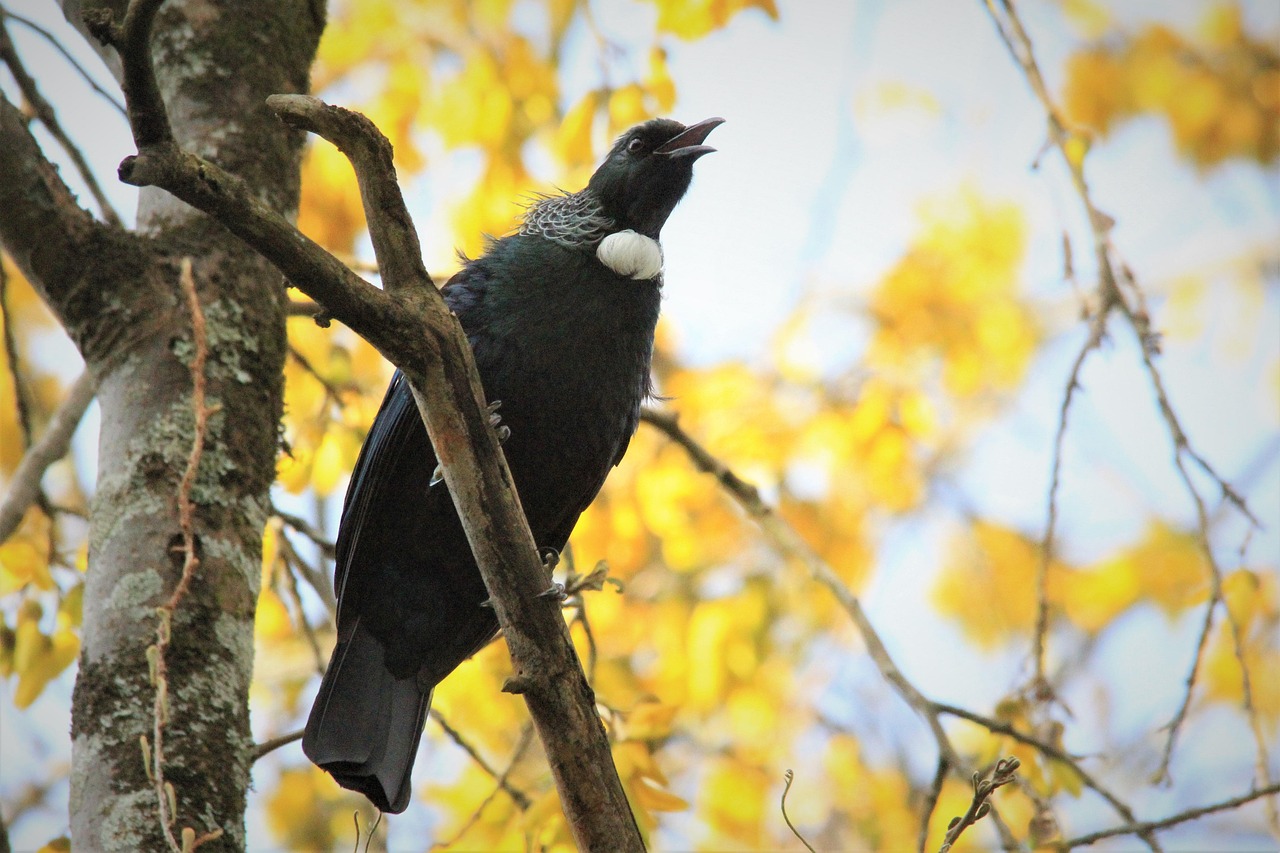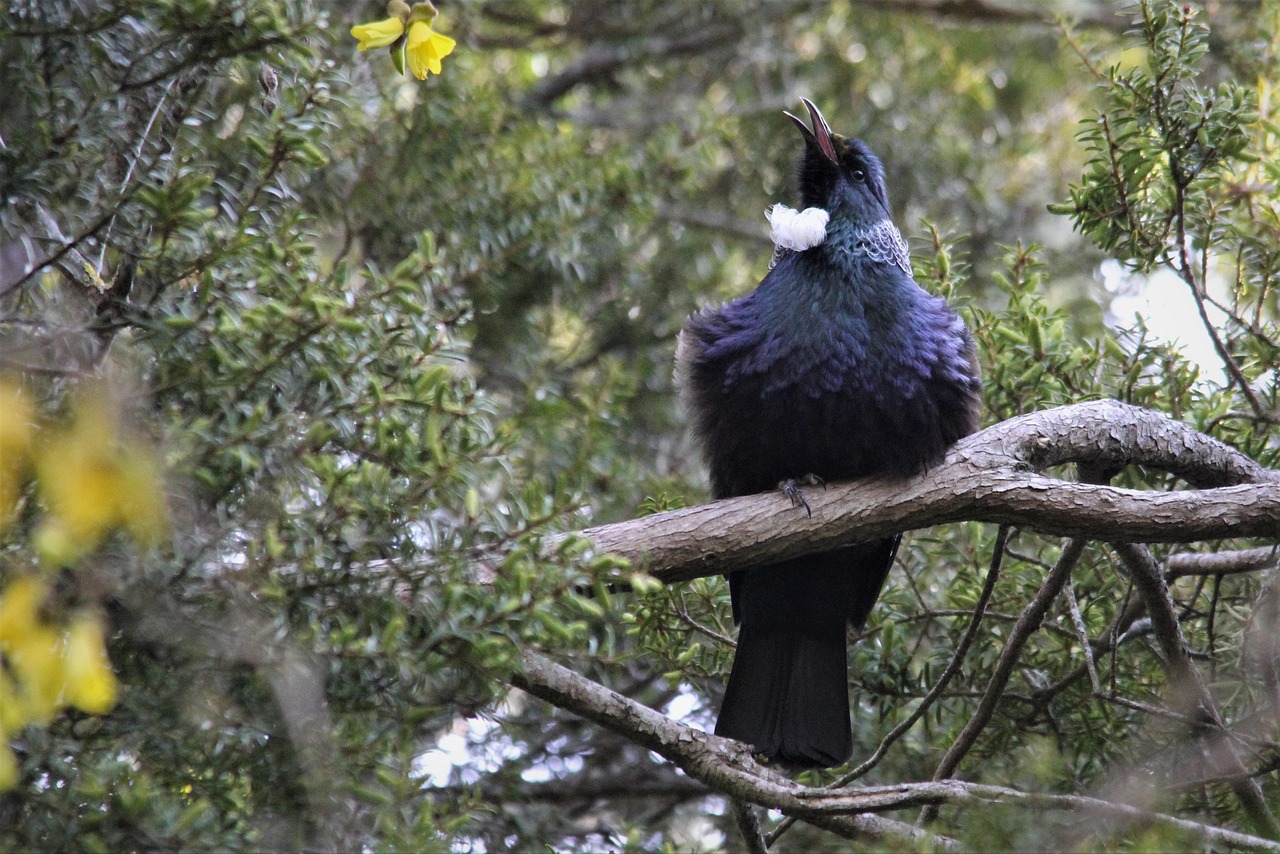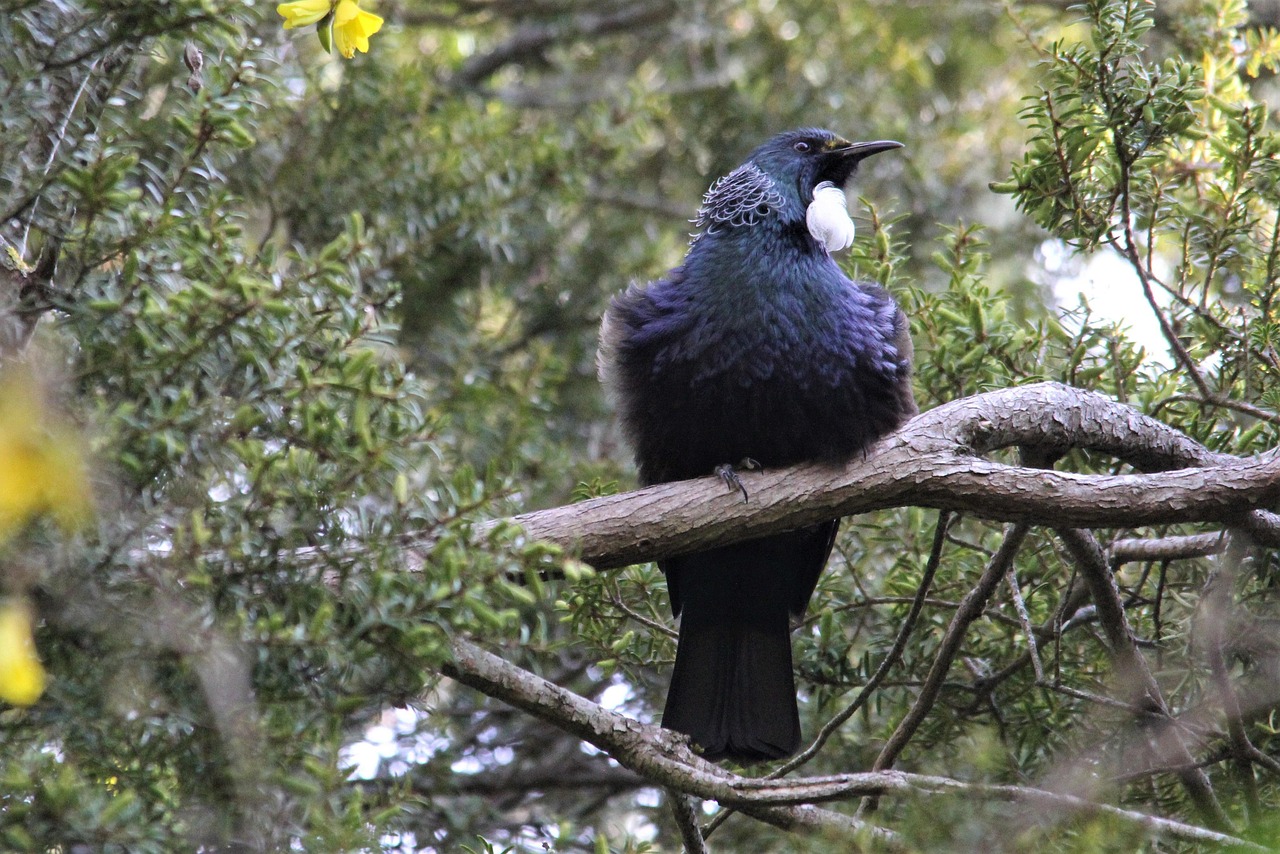The Kowhai tree, known for its stunning bright yellow blooms, has a moderate growth rate. Typically, it grows around 1 to 2 feet per year, reaching maturity in about 10 to 20 years, depending on the growing conditions and care it receives.
The Kowhai tree, or Sophora microphylla, is a beloved native species of New Zealand. It is famous for its vibrant yellow flowers that bloom in spring and early summer. These blossoms attract various birds, including the native tui and bellbird, making the tree a popular choice for wildlife gardens. The Kowhai tree not only offers aesthetic appeal but also plays a crucial role in local ecosystems.

Understanding the growth rate of the Kowhai tree is essential for gardeners and landscapers who wish to incorporate this beautiful species into their outdoor spaces. Factors such as soil quality, water availability, sunlight, and climate can significantly influence how quickly the tree matures. Below are some key factors that affect the growth rate of the Kowhai tree:
- Soil Type: Kowhai trees thrive in well-drained soils rich in organic matter. Poor soil conditions may stunt growth.
- Watering: While Kowhai trees are drought-tolerant once established, they require consistent watering during their early years.
- Sunlight: Full sun exposure helps optimize growth, leading to healthier trees with more blooms.
- Climate: Kowhai trees prefer temperate climates with mild winters and warm summers for optimal growth.
Kowhai Tree Growth Characteristics
The Kowhai tree exhibits several characteristics that make it unique among flowering trees. Its leaves are small and feathery, providing a delicate appearance that contrasts beautifully with the bold yellow flowers. The tree typically reaches a height of 15 to 25 feet, with a spread of similar dimensions, creating an attractive canopy.
Young Kowhai trees often have a bushy appearance but develop a more elegant form as they mature. Their growth habit can be influenced by trimming and care practices. Regular pruning encourages healthy branching and can help maintain an aesthetically pleasing shape.

Here’s a breakdown of the key growth phases of the Kowhai tree:
| Phase | Duration | Characteristics |
|---|---|---|
| Seedling | 0-2 years | Slow initial growth. Establishes roots and begins leaf development. |
| Juvenile | 3-5 years | Increased height growth. Leaf production becomes denser. |
| Mature | 6-20 years | Full height achieved. Regular blooming begins, attracting wildlife. |
The Kowhai tree’s vibrant blooms typically appear in clusters during its flowering season. The bright yellow flowers are not only visually striking but also serve as a critical food source for various pollinators. The tree’s ability to attract birds and insects enhances biodiversity in any garden setting.
In terms of maintenance, Kowhai trees are relatively low-maintenance once established. However, they do benefit from occasional fertilization in early spring to promote healthy growth and blooming. Mulching around the base of the tree can help retain moisture and suppress weeds.

Overall, the growth rate and blooming characteristics of the Kowhai tree make it an excellent choice for gardeners looking to add color and life to their landscapes. Its moderate growth rate allows for flexibility in planning garden layouts while offering stunning visual appeal through its bright yellow flowers.
Growing Conditions for Kowhai Trees
To achieve optimal growth rates and vibrant blooms, it is vital to provide the Kowhai tree with suitable growing conditions. Several factors influence the health and development of this tree, contributing to its overall success in landscaping and gardening.
Soil Requirements
The Kowhai tree prefers well-drained, fertile soil that is rich in organic matter. Here are some important soil considerations:
- pH Level: Kowhai trees thrive in slightly acidic to neutral soil, with a pH range of 6.0 to 7.0. Testing soil pH can help ensure appropriate conditions.
- Drainage: Good drainage is crucial. Heavy clay or waterlogged soils can lead to root rot and hinder growth.
- Organic Matter: Adding compost or well-rotted manure can improve soil fertility and structure, promoting healthy growth.
Watering Needs
Watering is a critical aspect of establishing Kowhai trees. During their early years, these trees require regular watering to promote root development. Consider the following watering guidelines:

- Frequency: Water young trees deeply once a week during dry spells. Established trees may only need supplemental watering during prolonged droughts.
- Method: Use a soaker hose or drip irrigation to deliver water directly to the roots, minimizing evaporation and runoff.
- Signs of Water Stress: Wilting leaves or leaf drop indicates the need for more water. Conversely, yellowing leaves may signal overwatering.
Sunlight Requirements
Sunlight plays a significant role in the growth and blooming of Kowhai trees. Ideally, these trees should receive full sun exposure for at least six hours a day. Here’s how sunlight affects their growth:
- Flower Production: Adequate sunlight promotes abundant flowering, enhancing the visual appeal of the tree.
- Health Benefits: Full sun encourages strong, healthy growth, reducing the risk of diseases and pests.
- Shade Tolerance: While Kowhai trees prefer full sun, they can tolerate partial shade but may produce fewer flowers.
Pest and Disease Management
While Kowhai trees are generally resilient, they can be susceptible to certain pests and diseases. Regular monitoring and preventive measures can help maintain their health.
Pests
- Kowhai Moth: This pest can cause leaf damage. Hand-picking or using insecticidal soap can help manage infestations.
- Aphids: These small insects can sap nutrients from the tree. Introducing beneficial insects like ladybugs can aid in controlling aphid populations.
- Scale Insects: Scale can weaken the tree by feeding on plant sap. Regularly inspecting branches and applying horticultural oil can help manage these pests.
Diseases
- Root Rot: Caused by overwatering or poor drainage, root rot can be fatal. Ensuring proper soil drainage is crucial.
- Leaf Spot: Fungal infections may cause discoloration of leaves. Removing affected leaves and improving air circulation can help mitigate this issue.
Seasonal Care for Kowhai Trees
Caring for Kowhai trees throughout the seasons ensures they remain healthy and vibrant. Here’s a seasonal care guide:
- Spring: Fertilize with a balanced fertilizer to promote growth and blooming. Prune any dead or damaged branches.
- Summer: Monitor watering needs closely, especially during hot months. Mulch around the base to retain moisture.
- Autumn: Rake fallen leaves and debris to prevent disease. This is an excellent time for planting new Kowhai trees if desired.
- winter: Protect young trees from frost by covering their bases with mulch or protective materials. Avoid heavy pruning during dormancy.
Providing appropriate care and conditions will lead to a thriving Kowhai tree with stunning yellow blooms that enhance any landscape.
Propagation Methods for Kowhai Trees
Propagating Kowhai trees can be a rewarding experience for gardeners. There are several methods to propagate these beautiful trees, each with its advantages and considerations. Understanding these techniques can help you successfully grow new Kowhai trees from existing specimens.
Seed Propagation
One of the most common methods to propagate Kowhai trees is through seeds. This method is straightforward but requires patience, as germination can take time. Here are the steps involved:
- Seed Collection: Collect ripe seeds in late summer or early autumn. Ensure the seeds are fully mature for the best germination rates.
- Seed Preparation: Soak seeds in warm water for 24 hours before planting. This helps to soften the seed coat, promoting better germination.
- Planting: Sow seeds in a well-draining potting mix or directly in the garden in spring. Cover lightly with soil.
- Watering: Keep the soil consistently moist but not waterlogged. Germination typically occurs within 2 to 6 weeks.
Cutting Propagation
Another effective method for propagating Kowhai trees is through cuttings. This technique allows you to create clones of an existing tree. Here’s how to do it:
- Timing: Take cuttings in late spring or early summer when the tree is actively growing.
- Selecting Cuttings: Choose healthy, non-flowering stems that are about 4 to 6 inches long. Make sure to cut just below a leaf node.
- Treatment: Dip the cut end in rooting hormone to encourage root development.
- Planting Cuttings: Insert the cuttings into a light, well-draining potting mix. Water them lightly and cover with plastic to maintain humidity.
- Rooting Time: Keep the cuttings in a warm, bright location. Roots should develop within 4 to 8 weeks.
Transplanting Young Trees
Once you have successfully propagated Kowhai trees, transplanting them properly is essential for their continued growth. Here are some guidelines for transplanting young trees:
- Timing: The best time to transplant is during early spring before new growth begins or in autumn after leaf drop.
- Preparation: Prepare the new planting site by loosening the soil and removing any weeds or debris.
- Root Ball: When removing the young tree from its container or original site, ensure that you keep a large enough root ball to minimize transplant shock.
- Planting Depth: Plant the tree at the same depth as it was previously growing, ensuring that the root flare is visible above the soil line.
- Watering: Water thoroughly after transplanting to help settle the soil around the roots.
Caring for Young Kowhai Trees
Caring for newly planted Kowhai trees is crucial for their establishment and long-term health. Here are some care tips specifically for young trees:
Watering Guidelines
Younger Kowhai trees will require more frequent watering than established trees. Follow these guidelines:
- Frequency: Water young trees every few days during dry spells. Adjust frequency based on rainfall and temperature.
- Deep Watering: Ensure that you water deeply, allowing moisture to reach the root zone.
Nutrient Needs
Nutritional support is necessary for young Kowhai trees to thrive. Consider these practices:
- Fertilization: Apply a balanced fertilizer in early spring to encourage healthy growth.
- Organic Matter: Incorporate compost into the soil around the base of young trees to improve fertility and soil structure.
Pest Management
Monitoring young trees for pests is essential to prevent infestations from becoming severe. Regularly check for signs of pests such as leaves being eaten or sticky residue on leaves (indicative of aphids).
- Pest Control: Hand-picking pests or using insecticidal soap can help protect young trees.
- Diversity: Planting companion plants nearby can attract beneficial insects that control pests naturally.
Caring for young Kowhai trees with attention to their specific needs will help ensure they grow into healthy, thriving specimens capable of producing those stunning yellow blooms that make them so desirable in gardens.
Environmental Impact and Benefits of Kowhai Trees
In addition to their aesthetic appeal, Kowhai trees contribute significantly to the environment. They provide numerous ecological benefits that make them a valuable addition to gardens and landscapes.
Wildlife Habitat
Kowhai trees are an essential component of their native ecosystems. They offer habitat and food for various wildlife species, including:
- Birds: The bright yellow blooms attract nectar-feeding birds such as tui and bellbirds, which play a vital role in pollination.
- Insects: The flowers also provide nourishment for various insects, including bees, which contribute to overall pollination in the area.
- Mammals: Small mammals may utilize the tree for shelter and forage on fallen seeds and leaves.
Soil Erosion Control
The Kowhai tree’s extensive root system helps stabilize soil, making it an effective choice for erosion control. By planting Kowhai trees on slopes or near waterways, gardeners can reduce the risk of soil erosion during heavy rains.
Carbon Sequestration
As with many trees, Kowhai trees contribute to carbon sequestration. They absorb carbon dioxide from the atmosphere, helping to mitigate the effects of climate change. Planting Kowhai trees not only enhances biodiversity but also supports efforts to create a more sustainable environment.
Common Misconceptions About Kowhai Trees
Despite their popularity, there are some common misconceptions about Kowhai trees that may deter potential gardeners. Addressing these can help promote a better understanding of this remarkable species.
Myth: Kowhai Trees Are Difficult to Grow
Many believe that Kowhai trees are challenging to cultivate. However, with proper care and attention to their needs, these trees can thrive in various conditions. They are relatively low-maintenance once established and can adapt to different soil types as long as drainage is adequate.
Myth: Kowhai Trees Are Invasive
Another misconception is that Kowhai trees are invasive. In their native range in New Zealand, they play a crucial role in the ecosystem. When planted responsibly outside their native habitat, they do not typically pose a threat to local flora.
Final Thoughts
The Kowhai tree stands out for its striking bright yellow blooms and moderate growth rate, making it an exceptional choice for gardeners and landscapers alike. Understanding its growth requirements, propagation methods, and environmental benefits can help ensure success when cultivating this beautiful species.
Kowhai trees not only enhance the visual appeal of gardens but also support local wildlife and contribute positively to the environment through soil stabilization and carbon absorption. By providing appropriate care and nurturing young trees, gardeners can enjoy the rewards of this stunning tree for years to come.
As awareness grows regarding the importance of native flora and sustainable gardening practices, the Kowhai tree is poised to gain even more appreciation. Its unique beauty and ecological contributions make it a valuable addition to any landscape, encouraging a harmonious relationship between nature and human cultivation.
Ultimately, planting a Kowhai tree is not just an investment in beauty; it is a step towards fostering biodiversity and supporting environmental health. Whether you are a seasoned gardener or a novice looking to enhance your outdoor space, the Kowhai tree offers a myriad of benefits that are sure to delight.
